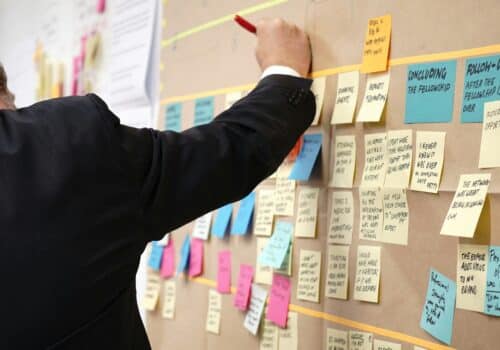ERP Readiness Series: 3 False Assumptions About Business Processes and ERP
At SYTE, when we talk about ERP Readiness, we’re talking about assessing the readiness of your organization’s people, processes, and technology related to the implementation of a new ERP system or the upgrade and optimization of an existing one. We have already written about people readiness. In this post we turn our attention to business processes.
A Definition of Process Readiness
In this post, we are going to address three false assumptions about business processes and how they relate to ERP systems. First, let’s briefly define our terms.
Merriam-Webster defines the word process “as a series of actions or operations conducing to an end.” Your business processes, then, are the actions you and your employees take to accomplish certain business objectives. Processes in your business can be viewed at the micro level, the steps necessary to generate an invoice, for example. Business processes can also be viewed at a macro level. For example, all of the stages between taking an order and receiving payment for that order make up the order-to-cash process.
We will dive into particular business processes in future posts, but let’s talk about some common assumptions that can hamper an organization’s level of process readiness.
3 False Assumptions
1. ERP systems will simplify and improve business processes.
Software exists to make things faster and easier, right? Often business leaders think that ERP systems by themselves will simplify and improve their business processes and will streamline operations.
The reality is that running an ERP system requires a great deal of organizational discipline and oversight in order to function effectively. Dropping ERP software into a business with incoherent and inefficient business processes will not suddenly make those processes clear and efficient. If anything, the integration of an ERP system will push unclear and inefficient business processes into the spotlight.
As we’ve seen in our series on people readiness, it is the role of the business analyst on the Core Team to map as-is business processes and to recommend improvements prior to the ERP implementation process.
2. We can adjust as we go.
People are often afraid to change how they do their work. The assumption that business processes can be changed little-by-little throughout the ERP implementation process is often a reflection of the fear that big changes induce. Now, obviously, all ERP implementations do not require wholesale business process changes. Upgrading or optimizing an existing ERP system often means that small tweaks and changes to processes can take place rather than large-scale ones.
However, when businesses transition from a system of cobbled-together processes that rely on legacy accounting software, spreadsheets, and reams of paper, implementing a new ERP system often represents a huge change in the way work is accomplished in an organization. In these businesses in particular—businesses transitioning from legacy systems—the notion that processes can be adjusted little-by-little or “as we go” is simply untrue.
Yes, during the implementation of any ERP system, small adjustments are made to both business processes and to the ERP system itself, that is true. However, those small adjustments are often made toward the end of an implementation, or even after an implementation has taken place. The norm is that businesses often overhaul their business processes in anticipation of the changes that takes place once a new ERP system is installed.
Recognizing the potential enormity of the change that implementing an ERP system entails for your business is often the difference between the success or failure of an ERP project. Put another way, businesses that embrace the need for process change before implementing an ERP system often succeed in implementing their system more quickly, for less money, and with less wear-and-tear on their Core Team and employees.
3. Documenting processes is a waste of time.
At SYTE, we sometimes hear business leaders and employees express frustration at having to document their processes, “We know our processes and how they flow.” And, to some extent, that’s true. The assumption that documenting processes is wasted time often coexists with an assumption that business processes will not need to change to conform to an ERP system.
The truth is that ERP systems will constrain your business processes and often require that your business processes conform to commonly assumed best-practices. While ERP solutions are optimizable, that optimization is often built upon a stable framework of best practices for core business processes, the assumption being that most businesses can be run using the standard order-to-cash business process, as one example.
Documenting your as-is business processes and mapping those processes to a potential ERP system during the selection phase will ultimately save time and money during the ERP implementation. However, documenting business processes ahead of time has the additional benefit of illuminating industry-specific processes, and even processes specific only to your business, that will ultimately require optimization of the ERP system. Identifying those areas early can greatly affect your choice of an ERP solution provider by determining whether or not they can achieve the level of customization your business will need.
The Mountain Top

If you need help getting to the mountain top in order to see your business processes more clearly, give us a call. We’re expert climbers, and we’re happy to help.
————-
ERP Readiness Self-Assessment
Is your organization ready for a new or upgraded ERP solution? Find out with this complimentary self-assessment.
Doing Business Better
You strive for excellence, believe in your people, and want to do things right the first time. And you know that you need help to get to the heart of your business challenges and make the best choices for the future of your privately held manufacturing and distribution company. That’s where we come in.
We help you focus and find exactly the right path to accelerated growth and sustainable success — from your people to your processes to your ERP software.



